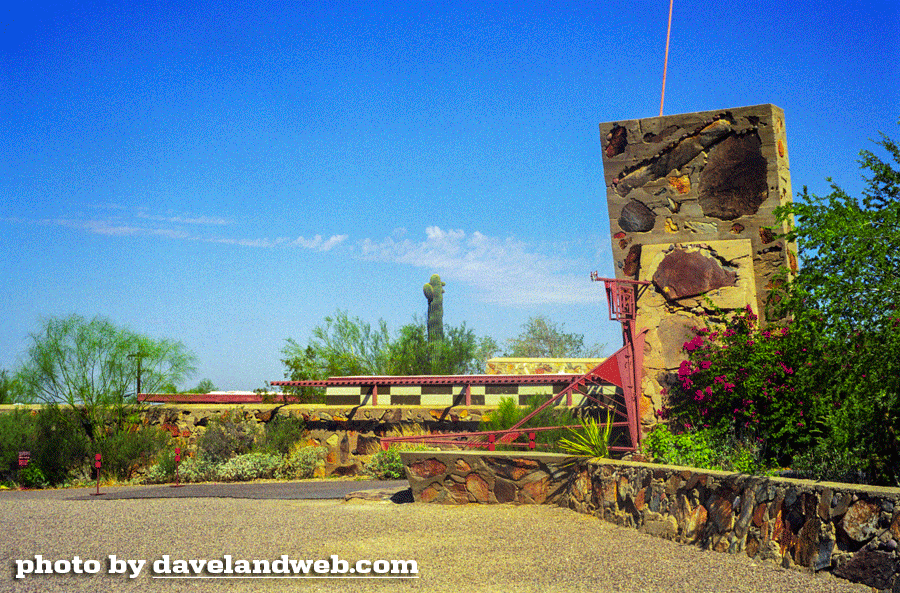
In August 1997 I paid my first visit to Taliesin West in Arizona. My brother lived briefly in Scottsdale, which was how I happened to visit this school of architecture founded by the legendary Frank Lloyd Wright. At the time, I had a point and shoot film camera that had a VERY dirty lens. I was experimenting with 3D photography by manually moving the camera from one eye to the other. Not really very exacting, but still kind of cool. Here are a few of those photos brought to life through the miracle of FauxD©.
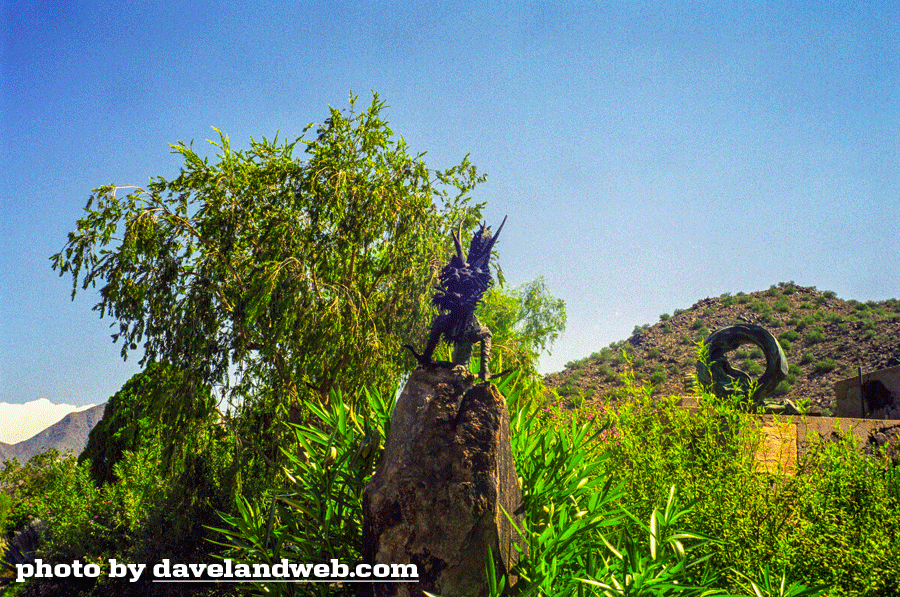
Because of some recent lemons-to-lemonade events in my life I found myself back in Arizona and was able to make a detour back to Taliesin West. I didn't have much time, but still managed to snap a few shots while there. It was interesting to see the differences in my composition 17 years later.
This time, I went in for a tight shot of this scary little dragon sculpture:

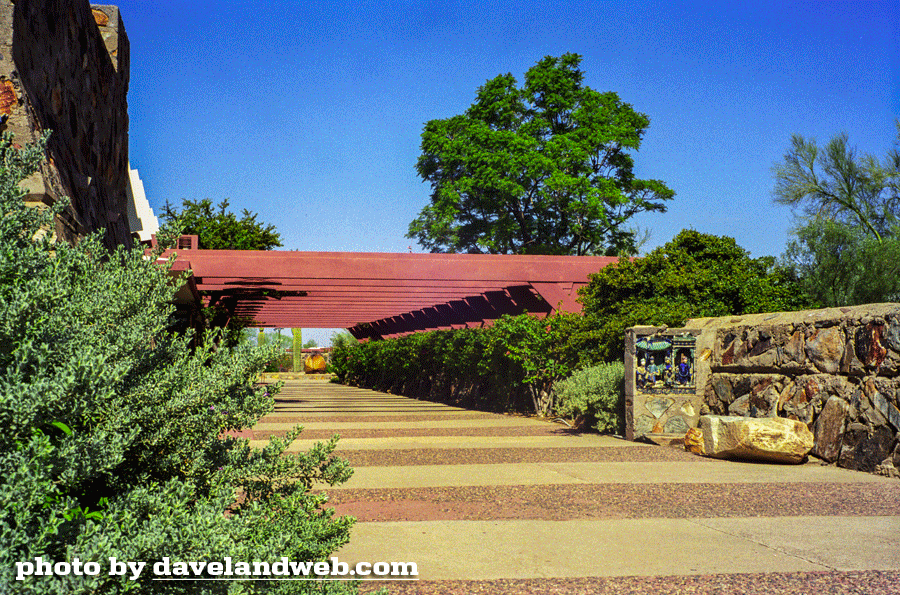
2014 version: shooting these beams at an angle makes a more compelling composition.
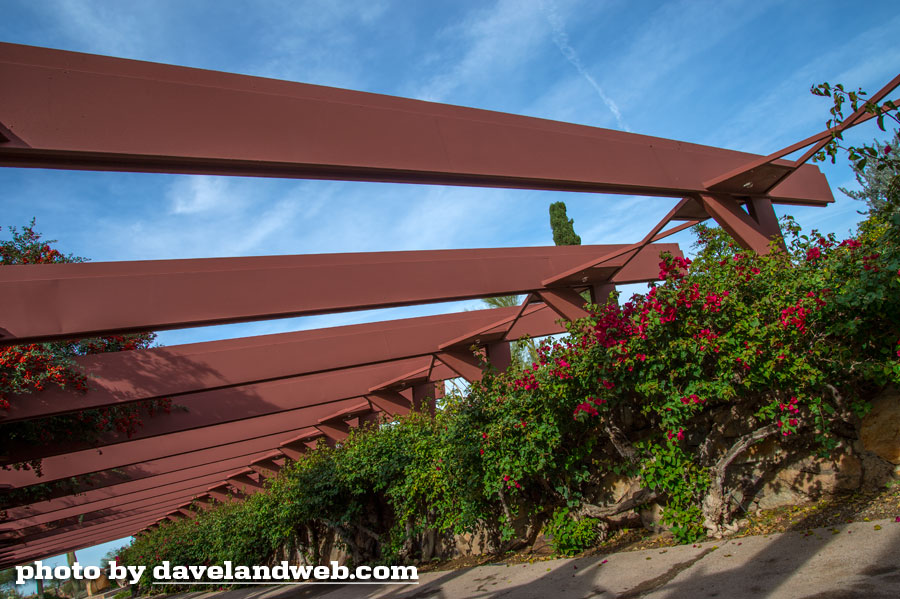
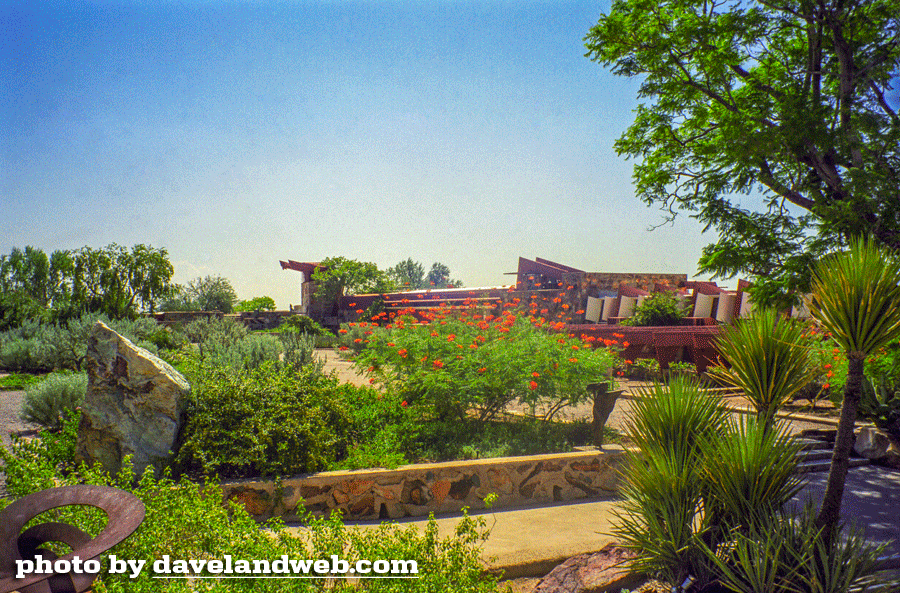
Also interesting to note that my camera was about as dirty as it was back in 1997; retouching those dirt spots is a pain in the arse.
This time, I attempted to capture the panoramic beauty of the landscape. Hope you enjoy as much as I did. Wright worked hard to get rid of the utility poles that were in his view; even contacted President Hoover. As you can see, he didn't get very far.

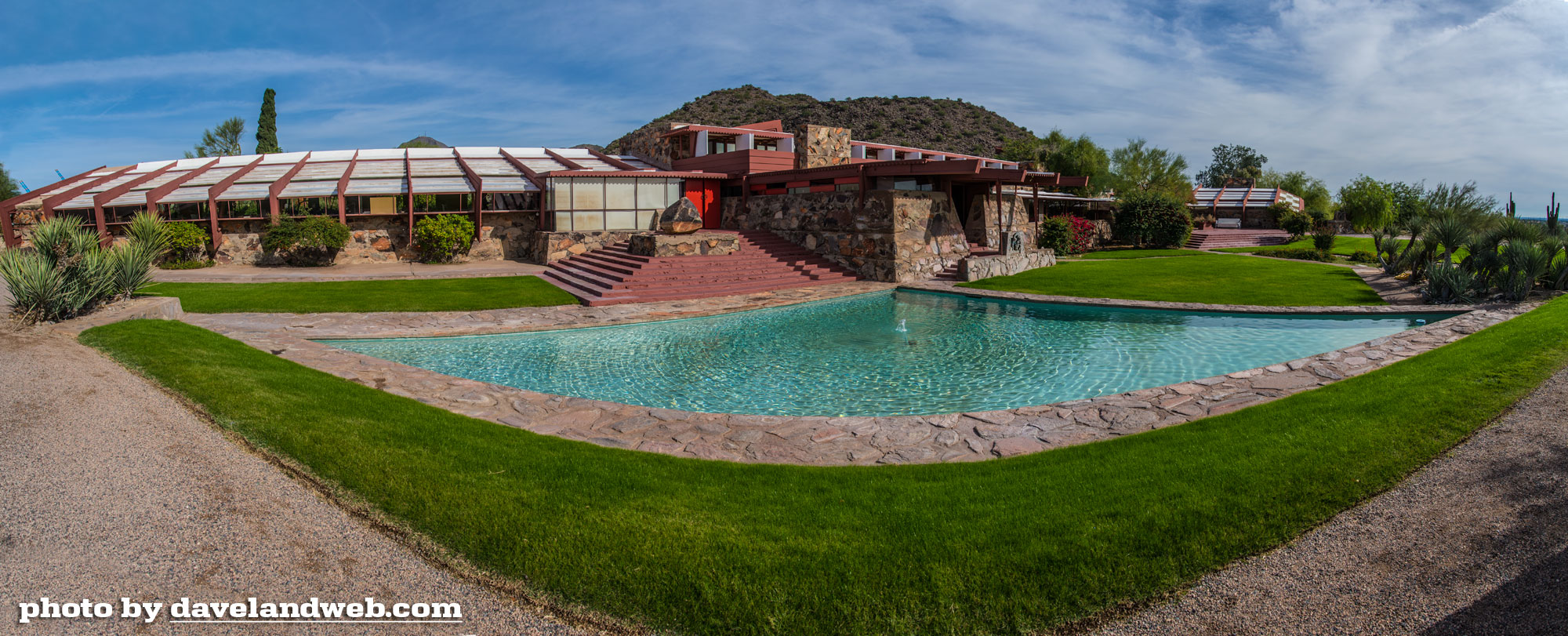
You can see the inspiration for Taliesin's logo in this rock:
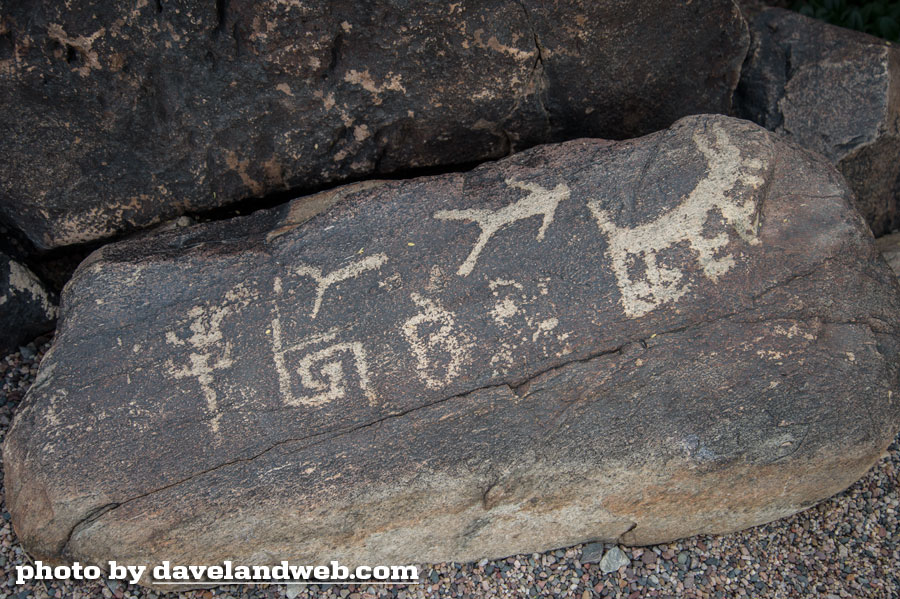
You only got this tile "autograph" on your building if you followed Wright's instructions to a "T" with no changes. Very few of these exist.
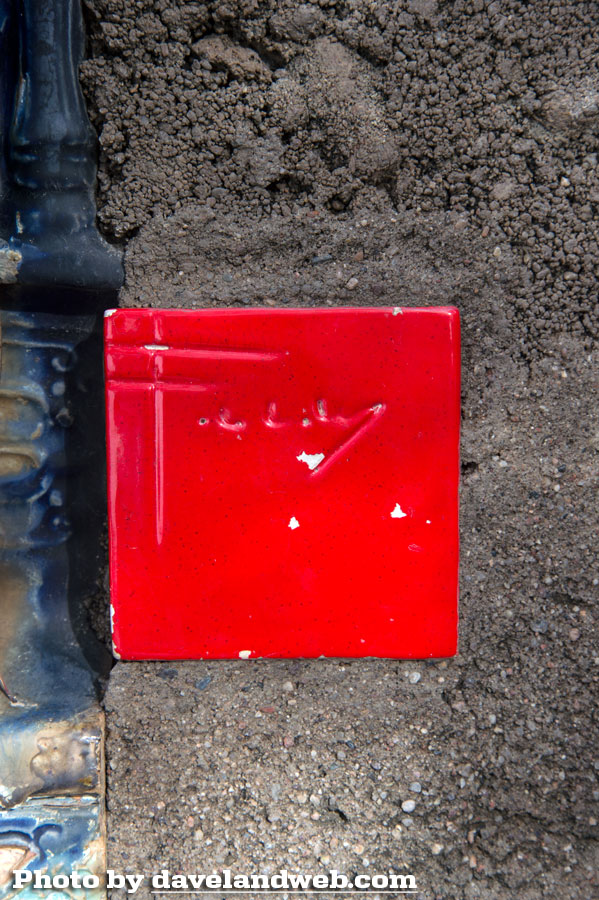
If you ever get a chance to detour your way out to Taliesin West, do so…and be sure to take the tour. It is a more than worthwhile use of time that will give you a peak into the genius that was Frank Lloyd Wright.
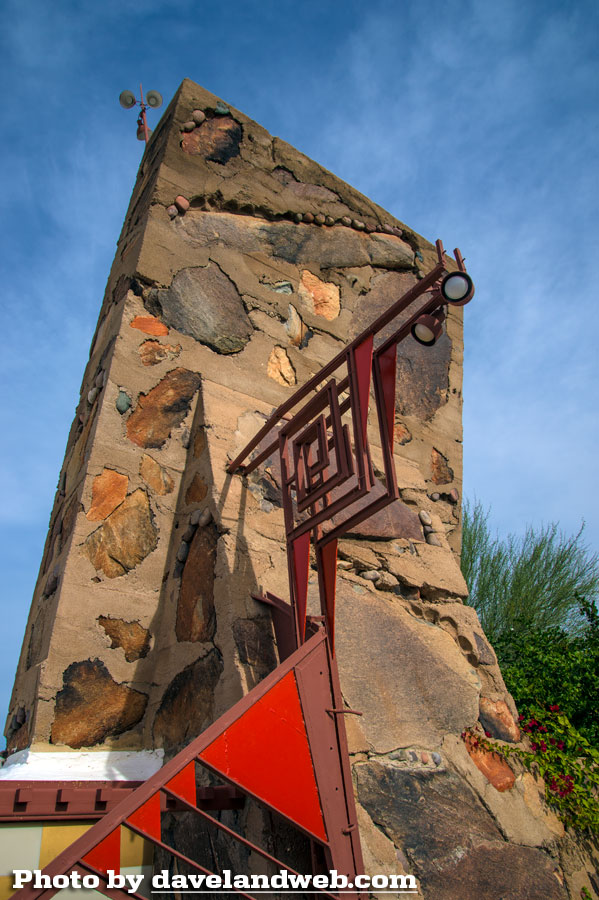
See more Daveland Taliesin West photos at my main website.

I had an opportunity to tour this spot a few years ago. We stayed in the Biltmore, and so got a double dose of the Wright stuff.
ReplyDeleteIt's amazing what could be accomplished with no need for heating (mild winters), air conditioning (occupied only in winter), waterproofing (little to no rain), no building codes (in comparison to today) and unlimited slave labor (his students).
It's all magnificent architecture and utterly non-functional for any other environment or occupancy. more like a sculpture garden. It is impressive in it's isolated, single-minded splendor. A must-see for visitors.
Thank you for the great pictures.
JG